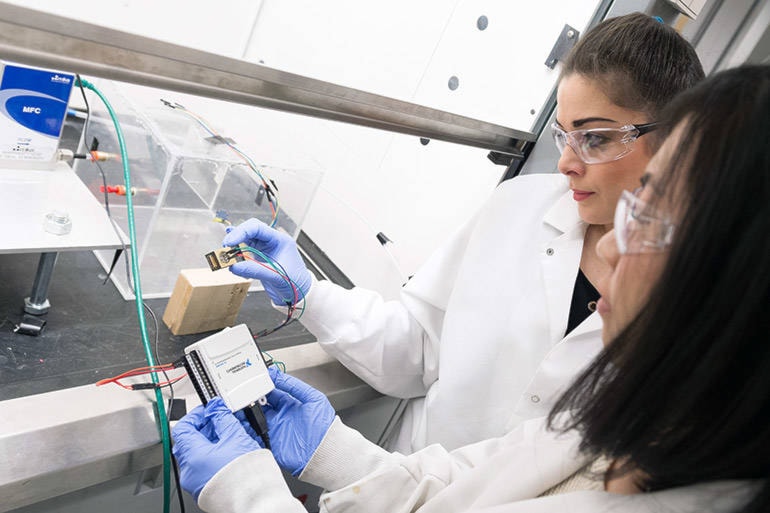Researchers at UBC Okanagan will soon supply law enforcement with technology for roadside breathalyzers that can identify tetrahydrocannabinol (THC), the main component found in cannabis.
Engineering professor Mina Hoorfar has been working on a device using ‘artificial nose’ technology which uses microfabrication appliances that can detect hazardous molecules, in this case THC. Hoorfar runs the university’s Advanced Thermo-Fluidic Lab and has collaborated with Cannabix Technologies to commercialize a marijuana breathalyzer.
“We have responded to a need from regulators in North America to develop tools to accurately monitor THC and the artificial nose lends itself to this application,” said Hoorfar. “Advances in microfabrication and nanotechnologies are enabling us to work at a smaller scale and with improved sensitivity.”
READ MORE: Kelowna singer Scotty Berg to perform the national anthem at Canucks game in March
READ MORE: West Kelowna Warriors’ charity ringette game to benefit young superfan
A study of five leading styles of THC breathalyzers that are under development or being commercialized was done at UBC Okanagan, where a doctoral student Hamed Mirzaei analyzed the difficult science of breath sensors.
“Despite its large potential, breath analysis still has several technical difficulties,” said Mirzaei.
“A healthy person can exhale a complex mixture of inorganic gases and many of these chemicals are from sources such as smoking, food consumption, bacterial microflora, work environments and medication.”
According to Hoorfar, everything from diet, age, body mass and gender can influence the composition of a person’s breath and can affect how well the breathalyzer sensors work. Hoorfar notes that THC is a tricky molecule in itself to work with due to its concentrations in breath can be quite low, estimated at 250 parts per trillion.
But, as cannabis becomes more used, Hoorfar said this type of technology is even more needed.
“With legalization of cannabis consumption in Canada and many parts of the U.S.A, it is vital to create and improve technologies for public safety and awareness,” said Hoorfar.
“Breath analysis is not only the fastest technology available but it’s also a reliable and portable method to detect recent cannabis use and impairment. We just need to create the perfect device.”
For more information on the research at UBC Okanagan, visit here.
To report a typo, email:
newstips@kelownacapnews.com.
@KelownaCapNews
newstips@kelownacapnews.com
Like us on Facebook and follow us on Twitter.
